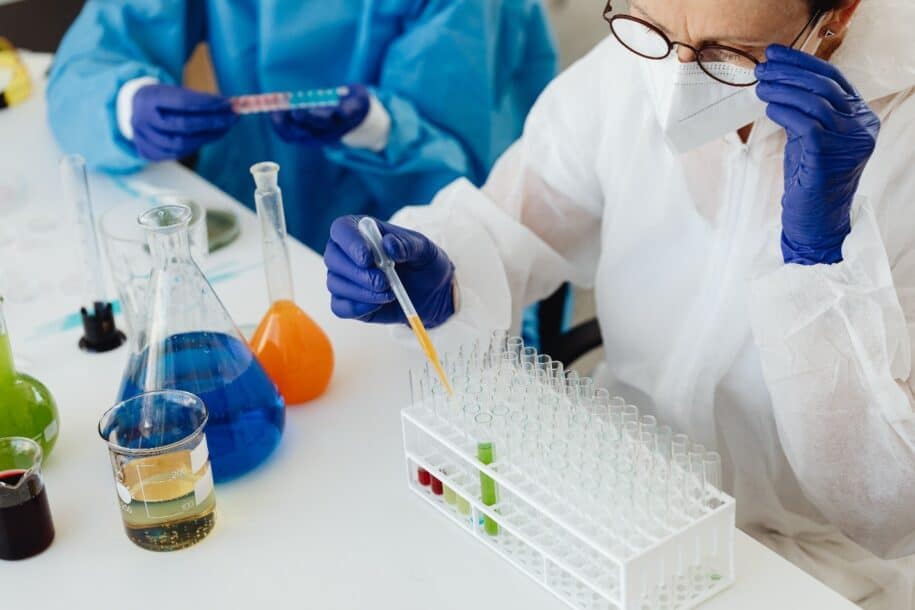The environmental issues that have accelerated alongside industrial activities have been forcing companies to rethink traditional methods of product development as far back as the 1940s. Green chemistry, as a method of adopting sustainable processes into chemical research and ecological engineering, has recently proven itself to be the veritable “missing link” between safety and corporate risk. As green chemistry incorporates the most potent ways of controlling hazards (i.e., substitution and elimination of chemical hazards) and promotes source and waste reduction, it sufficiently aligns the goals of safety and corporate responsibility. This makes green chemistry an incredibly valuable investment for companies in the modern era. This article will offer a brief overview of green chemistry and address how implementing software for chemical inventory and electronic SDS management can amplify this method for improving sustainability and reducing risk to worker and environmental health.
According to the United States Environmental Protection Agency (EPA), the normal hierarchy for those developing or employing green chemistry translates into the following three options:
- Chemical Hazard Prevention and Source Reduction – This option envelopes the research, design, and creation of chemical syntheses, processes, and products that require fewer resources, utilize renewable resources, are intended to be reused or recycled, are less hazardous to human and environmental health, and/or produce less or no chemical waste.
- Treatment – If a chemical cannot be substituted or altered for its required use, it should be treated in such a way that will make it less hazardous before it is disposed of. “Less hazardous” considers the toxicity of the chemical to organisms, the chemical’s potential for causing damage to ecosystems, its persistence within the environment or organisms, and whether or not it is inherently safe to handle (e.g., not flammable/explosive).
- Safe Disposal – When it is not feasible to substitute or treat chemicals, they should at least be disposed of safely.
Green chemistry is a means for companies to source and create more sustainable and much safer products. When green chemistry is utilized, both the means of production and the end result pose fewer risks to all stakeholders and the environment. However, once a company has committed to incorporating sustainable processes, the question becomes this – “how can we maximize that investment while still maintaining compliance with regulatory demands for safe chemical management?”. As green chemistry is all about efficiently using resources and minimizing waste, it pairs extremely well with software for chemical inventory and electronic SDS management.
Changing processes for more environmentally friendly alternatives has already been shown to be a smart financial decision for companies. Not only are fewer resources used and depleted by production and other processes, but often organizations will be rewarded for pushing more sustainable practices, whether that takes the form of grants, awards, or improved social reputation. Handling such investments with the assistance of cutting-edge technology only compounds the benefits of waste reduction and increased efficiency, contributing to greater returns. If a facility is storing, manufacturing, and/or using chemicals, the management of those chemicals includes compliance with various regulatory agencies, such as the EPA and the Occupational Safety and Health Administration (OSHA), to ensure that chemicals are handled safely. While employing green chemistry does assist organizations in complying with these regulations by inherently reducing the probability of chemicals having devastating effects on employee safety and/or the environment, there are ways that software for chemical inventory and electronic SDS management can add to this.
Whether a company uses solely green chemicals or a variety of compounds, a comprehensive chemical inventory and electronic SDS management software can enable the safe management and monitoring of large or small volumes of chemicals used in everyday business processes. Having a digital chemical inventory simplifies all key areas of chemical handling and control by providing users across the organization access to functionality such as container-level tracking, barcoding, easy data exporting, dashboards for data analysis, and more. Such software provides transparency into the transactions (chemicals used, transferred, tested, depleted, ordered, treated, etc.) that occur within an organization while maintaining mission-critical security requirements.
More specifically relevant to working with green chemicals, electronic SDS software alleviates companies’ struggles with access to essential SDS information and variations in SDS formatting. As many green chemicals will have been newly developed or are less commonly used, irregular SDS formatting can be especially problematic when utilizing them. When SDSs for an organization are not uniform, it can be difficult to find essential safety information when it is needed. Though a green chemical may not be considered hazardous by the OSHA Hazard Communication Standard, an SDS for that chemical will still contain critical information that ensures worker safety and health, such as first-aid recommendations if the chemical is ingested or comes in contact with skin, personal and environmental precautions, disposal considerations, etc.
Employing a chemical inventory and electronic SDS system can help an organization streamline not only production but also application processes. For example, if a company’s green chemistry strategy falls under the third category (safe disposal of chemicals), an application for special permits to confirm its efforts towards more sustainable, environmentally friendly practices such as low-flow/low-pollutant discharge may be required. A quickly searchable overview of all the chemicals within its facilities would greatly alleviate the burden involved with filling out such an application. When employees can search a chemical inventory and electronic SDS database, filtering out chemicals and compounds by specific details such as associated hazards, they can more easily determine how much (i.e., quantity) of a certain chemical is in stock, used annually, disposed of, etc. Where this process might take hours of searching through spreadsheets, crosschecking them with printed-off SDSs or a compilation of PDFs, and confirming these numbers with other team members in an equally manually laborious way, with the help of chemical inventory and electronic SDS software, it can take a matter of seconds.
New regulations concerning chemical management and workplace health and safety can arise quickly. A report from McKinsey claimed that the best way for companies to meet this challenge is to simplify decision-making processes and invest in the creation of agile workflows that enable them to react to changes faster than their competitors. A way to accomplish this is by implementing more cross-functional teams, roles, or tools (such as enterprise-wide software) that support faster execution of essential business functions. Chemical inventory and electronic SDS management software can encourage the continuous improvement of:
- environmental, health, and safety knowledge,
- the performance of safety practices used and products created,
- and the responsible management of chemicals (green or not)
by all employees and other stakeholders who manage and use chemicals within the organization.
Incidents, including personal and environmental, can cost a great deal of money and (especially in this tumultuous economy) it is a high priority for companies to avoid any financial risks. Investing in sustainable processes by changing components of research and production to incorporate green chemistry is a solid step toward a safer workplace for workers, end-users, and the environment. As workplace safety and sustainability concepts have both developed exponentially in the last few decades, these fields are overlapping more and striving towards many of the same goals. Therefore, investing in one can only benefit a similar investment in the other. Tools and software for safety management are rising to meet the challenge of supporting more streamlined sustainability practices and will drive even greater value from processes that fall into this category, such as green chemistry.
Author Bio

Abigail McKay
Abigail McKay leads SafetyStratus’ growing team of contributors as the Content Manager. Abigail has a Bachelor’s Degree in English and utilizes her education to communicate to the best of her ability the input from SafetyStratus’ team of safety professionals and technology experts. She has spent the last year building up the EHS knowledge resources available to SafetyStratus users and the wider community.



